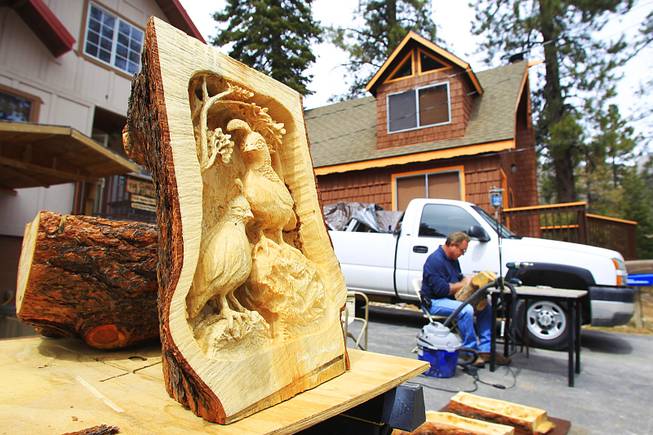
Doug Clinkscale works on one of his carvings in front of his house on Mt. Charleston Wednesday, March 28, 2012.
Saturday, April 7, 2012 | 2 a.m.
Mount Charleston
Doug and Stacy Clinkscales, Southern California transplants, love living on Mount Charleston. They just don’t agree on the best of the mountain’s four seasons.
Doug can’t wait for the looming spring thaw, rushing waterfalls, blooming plants and reappearing wildlife. Stacy yearns for autumn, when the leaves of the Aspen trees turn bright yellow, in stark contrast to the generally barren landscape of the Las Vegas Valley.
Doug Clinkscales can sense the approach of his favorite season. Mounds of snow blocking the popular Cathedral Rock trailhead across the street from his house are beginning to melt. Farther up the mountain, the temperature hovers around 30 degrees and skiers are zigzagging their way down the slopes of the Las Vegas Ski & Snowboard Resort.
He has set up a workbench in his driveway so he can work on woodcarvings. His 8-year-old daughter, Emily, sits nearby in a cowboy hat, doing her home-school assignment. The neighborhood is quiet. The annual migration of Mount Charleston snowbirds — leaving for the winter, returning for summer, opposite what occurs in the valley below — is just beginning.
“I’d say more than half of my neighbors go away for the winter,” Doug Clinkscales, 54, said. “We get all four seasons up here, and each one poses its own challenges.”
Life up here is different than down below in other respects, too. There are none of the big grocery stores, apartment buildings, casinos and strip malls that you’ll find 45 minutes away, down in the valley.
He recalls scouting neighborhoods with a house-hunting friend 17 years ago when they ended up exploring Mount Charleston. He had moved to Las Vegas two years earlier, from Southern California, to work in the elevator maintenance and repair business.
“We are coming down the mountain and we see a big, old elk in the middle of the road. After that I told my friend, ‘Live where you want, but I’m buying a place up here.’”
The red-roofed house was 600 square feet when Doug Clinkscales bought it. He has modified it — digging out space for a basement, doubling the size of the house, adding another room and building a deck in the shadow of Cathedral Rock. If he lived in a neighborhood governed by homeowner association rules, his workbench likely would be considered an eyesore and his home a gross affront to architectural homogeneity.
“Not having HOAs is one of the best things about living up here,” said Luke Ham, a fire captain with the Nevada Division of Forestry. “People are close up here; there is a real sense of community. You may get in a spat with your neighbor over something, but you are still going to go to his house party that weekend.”
Ham, 29, moved to the mountain soon after graduating from high school in Carson City. He skis in the winter, mountain bikes in the summer. When the mood strikes, he and his girlfriend drive down the mountain for sushi or a show.
Nobody up here is champing at the bit for more businesses on the mountain. With the support of the town board, the Clark County Commission has adopted an ordinance prohibiting any new commercial zones on the mountain.
Those who commute to the city for work say being able to return to “paradise” is worth it. And is a 45-minute drive really so bad when people in New York City, Los Angeles or San Francisco shrug off two-hour commutes?
Residents started moving to the mountain in the 1960s, after Warren “Doc” Bailey, owner of the Hacienda casino, bought a lodge in upper Kyle Canyon and started the process of developing a cabin resort community within a short commute of the city, where in the summer temperatures were 20 to 30 degrees hotter. Everyone on the mountain knows the names of old-timers, like 80-year-old ski instructor Marcel Barel and 81-year-old Rose Meranto, a member of the volunteer police force. Both Barel and Meranto have called Mount Charleston home since the late ’60s.
The first residential area was Old Town, which today is sandwiched between the one public school, Lundy Elementary, and the town meeting place, the public library. Once children move past elementary school, they take buses to the middle and high schools 40 miles away in Indian Springs.
At the turnoff of State Route 157 for the small neighborhood of rustic single-story homes, geodesic domes and modern cabins with floor-to-ceiling windows, there is a long bank of mailboxes fixed to a wooden fence, so the mail carrier does not have to navigate the narrow roads leading through the enclave.
The mountain’s volunteer police force is 25 people strong, and community involvement in general is high, residents say.
“We are like a family,” said Lauren Olsen, who has lived on the mountain for nine years, since she and her husband decided they liked their vacation home on the mountain so much they should move from Houston and live there full time.
“When people are at the grocery, they call their neighbors and ask if they can pick anything else up,” Olsen said. “I think because we don’t have family up here and we all have similar things to deal with, we become closer as a community.”
There are those in the community who prefer solitude, and no one argues.
“The great thing is that if you want to live up here and get away, you can do that,” Ham said. “It’s very easy to find a place up here with no neighbors, and if you don’t want to be social you don’t have to be.”
Doug Clinkscales is from the rural Southern California town of Ramona, Calif., which is relatively warm year-round, and his adjustment to life on Mount Charleston had some hiccups.
When he first moved there, the only car he owned was a Geo Metro, a compact car. After the first snow, he had to dig a path to the road and then went out and immediately bought a snowblower. He promptly purchased the first of two four-wheel-drive pickups that sport “Mount Charleston” specialty license plates.
But the snow is not the most worrisome part of living on the mountain.
“I love living up here, and I love the seasons. I think I get reverse altitude sickness when I go down the mountain,” Olsen joked. “What actually is a concern is the fires. A wildfire could take everything, destroy your home and trap the residents. We live in a box canyon, and that means there is no way out but the way you came in.”
Some things, like the effects of the poor economy, are the same on the mountain as in the valley. Doug Clinkscales lost his elevator maintenance job about eight months ago and carves wood and does other projects, largely to fill time while he searches for work.
“There have been a lot of foreclosures. We’ve been hit hard up here,” said Stacy Clinkscales, who works at the Spring Mountains National Recreation Area visitors center, just a short drive down the mountain from their home.
The two met on a blind date shortly after Stacy moved to Las Vegas in 1999. By June 2000, Stacy had moved to the mountain.
“Up here they say if you can make it through the winter, then you can live up here,” she said.
Indeed, not everyone down below seems to appreciate that Mount Charleston’s winters can thwart many outdoor activities.
It was nearing 80 degrees last week in Las Vegas and group after group entered the visitors center to ask Stacy Clinkscales about trails. She had to keep directing them to a single trail — the others were still covered in snow or closed altogether — and mostly recommended that hikers go to the Red Rock Canyon area and come back to the mountain from May to October.
“I got a hotel concierge one time who called in December and told me he had a group of guests who wanted to come up and go hiking,” Stacy Clinkscales said. “It’s like he had no idea that it’s freezing up here and there is snow. There is no hiking up here in December. I get calls like that all the time.”
While Doug Clinkscales is working on his carvings of indigenous Mount Charleston wildlife — mountain lions, elk and owls — and children pelting each other with snowballs, the Metro Police officer in charge of the local substation, Sgt. Eric Fricker, pulls up in a pickup just to check in and say hello.
About 1,350 people live on Mount Charleston, according to the latest county population report, but Fricker estimates more than half are part-time residents. Ham estimated only 300 people live on the mountain year-round.
Fricker knows the community well and has spent much of his four years on the mountain working with theNevada Highway Patrol, Nevada Department of Transportation and other agencies to make the mountain safer for everyone when visitors flood the area. The two-lane roads on the mountain often clog with snow tourists in the winter and hikers escaping triple-digit Las Vegas heat in the summer.
The Clinkscaleses said visits picked up after other popular outdoor recreation areas, like Lake Mead and Red Rock, started charging fees. Now litter, illegal parking and vandalism are all bigger issues on Mount Charleston.
“I couldn’t believe it, but someone actually hiked the Mary Jane Falls trail, which is hard. There is like a 1,000-foot elevation increase on the trail. And they spray painted the rocks up there,” Stacy Clinkscales said.
But the Clinkscaleses’ attachment to life on Mount Charleston overcomes any annoyance like heavy traffic or a week without mail because the roads are under 6 feet of snow.
“We may have to move, but we will never sell the house,” said Doug Clinkscales, referring to his search for work. “We’ve put too much into it, and we love it up here. My daughter will inherit this place someday.”
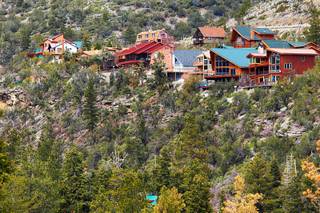
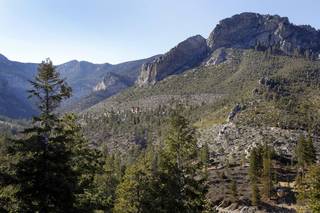
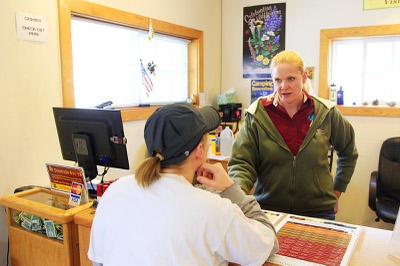
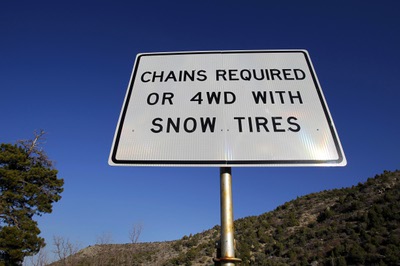
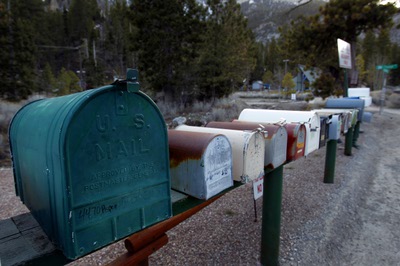

Join the Discussion:
Check this out for a full explanation of our conversion to the LiveFyre commenting system and instructions on how to sign up for an account.
Full comments policy